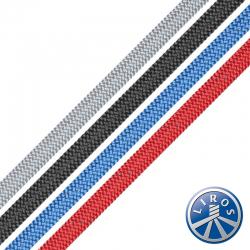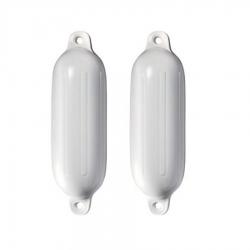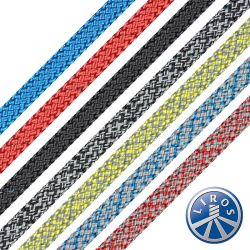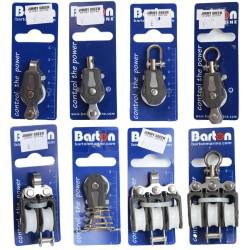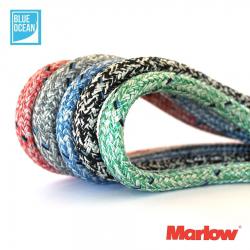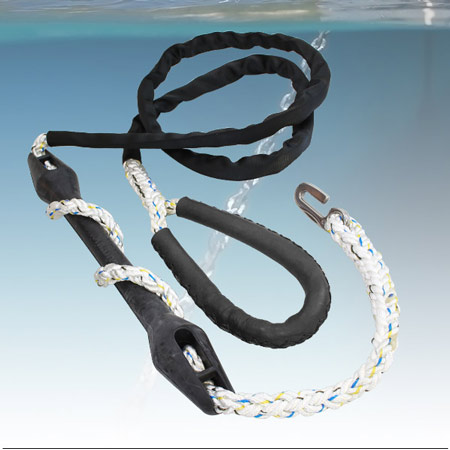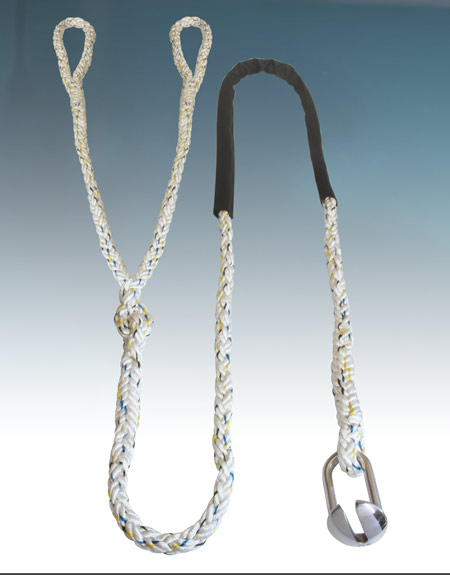
Shock absorption is a crucial element of successful all-chain anchoring, softening the ride when the wind and wave action lift the chain to an unforgiving, bar-tight rode.
What is Chain Snubbing?
Anchor snubbing is the deployment of a stretchy line—commonly referred to as a snubber or bridle—connected to your anchor chain and secured at the bow. The snubber serves two purposes. It removes the strain from the windlass and alleviates the shock loading that occurs when the chain becomes taut.
By introducing a degree of elasticity into the system, a snubber prevents snatching, reduces wear and noise, and creates a more comfortable anchoring experience.
Why Use a Snubber?
A snubbing system improves your anchoring setup in several key aspects:
Shock Load Absorption
Nylon rope stretches under tension, cushioning sudden movements and preventing jarring loads from travelling up the chain.
Windlass and Deck Gear Protection
Your windlass is not designed to take anchoring loads. Therefore, it is essential to transfer the load to a suitable strong point on the foredeck, such as the port and starboard mooring cleats, a central Samson Post, or a purpose-designed chain stopper. Using a snubbing line will protect the deck, its fittings, and their fixings from harmful jolts.
Enhanced Comfort
Reduced movement and noise contribute to a more peaceful experience, particularly overnight.
Better Holding Power
A consistent load on the anchor increases its holding efficiency by avoiding jerking that can loosen the set.
Extended Gear Lifespan
Reduced stress and friction on your equipment result in lower maintenance costs and an extended service life.
Snubbing Configurations
There are several methods for rigging a snubber system. Your choice will depend on your boat length, anchoring conditions, and personal preference on the means of deployment.
1. Single Snubber Line
A straightforward solution involves using one rope secured to the chain and led to a central bow cleat or a Samson Post.
Advantages:
- Simple to rig
- Quick deployment
Considerations:
- Can cause an asymmetric load if the line routing is offset via the port or starboard fairlead
- May conflict with the anchor chain if deployed over the bow roller, causing undesirable chafe.
Custom Build Chain Snubbing Strops
2. V-Shaped Bridle
Two ropes of equal length form a V from the chain to the port and starboard bow cleats.
Advantages:
- Balanced load distribution
- Reduced yawing and rolling
- Avoids the potential for abrasive contact with the chain over the bow roller
Considerations:
- Double the cost of the line
- More Professional Splicing required (three ends instead of two)
Custom Build Chain Snubbing V Bridles
3. Y-Shaped Bridle
A central snubber line connects to the chain, joined by two legs secured to either side of the bow.
Advantages:
- Can be specified as either internal or external
- Internal: Short V-tails on deck, with the Y-tail leading over the stemhead
- External: Long V-tails extend from the port and starboard fairleads to the Y-tail, located forward of the bow.
- Combines the load-sharing of a V-bridle with enhanced shock absorption from the extra length of the Y-tail
- Excellent stability
Considerations:
- More complex setup
- More expensive due to the amount of extra line and professional splicing required
Custom Build Chain Snubbing Y Bridles
Chain Hooks, Grabs and Grippers
How to Set Up a Snubbing System
Step 1: Select the Rope Fibre, Construction and Diameter
Consider only high-quality, marine-grade nylon or polyester with good elasticity.
The Jimmy Green Rigging Team is an ambassador for LIROS 3-strand and Anchorplait Nylon.
The rope diameter should be specified according to the Manufacturer's Break Load Rating, aiming to be comparable with your anchor chain.
If the line is too strong, it won’t give as much. If it is underspecified, it will have more elasticity but may prove sacrificial.
Anchorplait is the only rope to consider for a V-Bridle setup because the rope construction is conducive to a centre-eye splice. The beauty of the Anchorplait Centre | Eye Splice is that the rope remains continuous, ensuring maximum possible strength retention.
It is not possible to successfully splice an eye in the centre of a three-strand rope, so the only viable alternative is a seizing at the throat, which may not withstand the load.
Step 2: Select the Rope Length
Length equates to stretch, so the longer, the better, up to the point where it becomes unmanageable.
The bare minimum would be viewed as 3 to 4 metres, and some ocean cruising yachts have been known to go as long as 15 metres.
Adding mooring compensators, also known as rubber snubbers, to the system will also increase the elasticity for any given length of line.
Step 3: Attaching the Snubbing Line to the Chain
Use a dedicated chain hook or gripper, such as:
- Wichard Chain Grip Hook
- Ultra Chain Grab
- Standard Chain Grab Hook
- Kong Chain Gripper
- Osculati Chain Gripper
Ensure that it is a suitable size for your anchor chain. N.B. All these attachments are designed to fit over the chain, not through it.
Step 4: Securing the Snubbing Line Onboard
Lead the line (or lines) via the bow roller or the port and starboard fairleads to the forward mooring cleats or a foredeck strongpoint such as a Samson Post.
Anti-chafe measures are an excellent addition to the snubbing system; they will protect the rope from abrasion wherever it comes into contact with the chain, the deck, hardware or other lines.
Step 5: Deploying the Snubber to take the Load
Once the snubber is fastened at both ends:
- Let out more anchor chain until the snubber takes the load
- Let out more chain so that there is a loop between the bow and the attachment hook slack enough to prevent it from straightening out under any circumstance (other than the snubber sacrificially parting under excessive load)
The Jimmy Green Rigging Team can provide custom-spliced snubbers and bridles to match your chain size and individual configuration requirements.
Main Menu
Main Menu
Back
Main Menu
Back
Main Menu
Back
Back
Main Menu
Back
Main Menu
Back
Back
Main Menu
Back
Main Menu
Main Menu
Back
Main Menu
Back
Back
Back
Back
Back
Back
Back
Back







